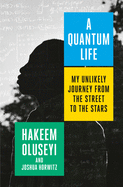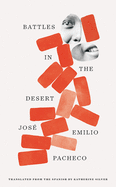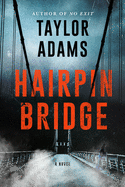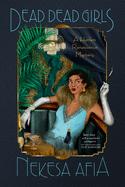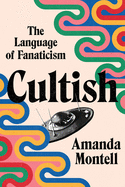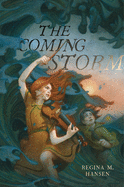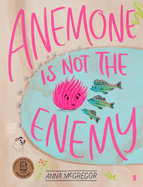Friday, June 18, 2021
Rather than recommend yet another World War II narrative about the Normandy landings or the Battle of Stalingrad, for this Father's Day, we'd like to highlight a few books about a much less mythologized subject: what happened after the war ended, when millions of displaced people looked to find their way home.
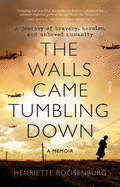 |
 |
The Walls Came Tumbling Down by Henriette Roosenburg (Scribe US, $18) and The Nine by Gwen Strauss (St. Martin's Press, $28.99) both document the difficult journeys of mostly female bands of resistance fighters escaping from Nazi captivity. While The Nine takes place when the war was not yet over, both books capture the chaos of Germany in a rapid state of collapse. The women make their way home by any means necessary, including floating downriver in boats and crossing crumbling bridges. Though the dangers the women face are significant, their unorthodox means of travel help contribute to an unexpected feeling of picaresque adventure, as the women lie and scavenge their way toward freedom.
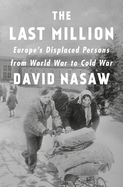 The women were lucky to have homes to return to. The Last Million by David Nasaw (Penguin Press, $35) recounts the fate of the approximately one million refugees left in Germany who refused to return to their home countries or had nowhere to go. Many of these refugees had legitimate political reasons to be fearful of returning to territory now controlled by the Soviet Union, while others were Nazi collaborators and war criminals seeking to evade punishment. The displaced million formed complex mini-societies in their temporary camps, seeking to re-create the homes that they might never return to as they waited to be resettled in reluctant Allied nations.
The women were lucky to have homes to return to. The Last Million by David Nasaw (Penguin Press, $35) recounts the fate of the approximately one million refugees left in Germany who refused to return to their home countries or had nowhere to go. Many of these refugees had legitimate political reasons to be fearful of returning to territory now controlled by the Soviet Union, while others were Nazi collaborators and war criminals seeking to evade punishment. The displaced million formed complex mini-societies in their temporary camps, seeking to re-create the homes that they might never return to as they waited to be resettled in reluctant Allied nations.
Together, these three books are testaments to the powerful draw of home as millions of people tried to put their lives back together in the wake of catastrophe. --Hank Stephenson, manuscript reader, the Sun magazine
The Brittanys
by Brittany Ackerman
Brittany Ackerman's debut novel, The Brittanys, is a deeply felt, often funny foray into both the ephemeral and lasting pangs of upper-middle class women's adolescence. Narrator Brittany is one of five Brittanys who have been friends since childhood. She and her closest friend, Brittany Jensen, begin to drift apart as the two start high school and Jensen accuses the narrator of being "boy crazy." Over the course of a year, the narrator explores life without her best friend, traversing bad dates, sexual politics, feel-good consumerism and self-centered friendships in search of what from childhood can last.
The precision and accuracy with which Ackerman captures this particular early-2000s period of American adolescence makes for a richly nostalgic portrait of lost time. The sometimes absurd but often recognizable details of this moment--the smell of Eggo waffles in the toaster, a Nokia flip phone as a status symbol, learning to play Nintendo 64 games to impress sophomore boys--contribute to the sense of humor and retrospective self-awareness, even while the novel always treats its narrator with a tender generosity. And while the narrator's adventures in the realm of romance and sex form the basis of the plot, it is the poignant female relationships--between best friends and mothers and daughters--that reveal the story's true soul. Amidst the satirical mentions of half-Coke, half-Sprite mixtures and prepubescent boys who look like the stars of Jackass, Ackerman locates an achingly realistic but unsentimentally clear-eyed portrait of the youthful relationships that end but are never truly over. --Alice Martin, freelance writer and editor
Discover: A raw, funny and bittersweet novel about the awkward tenderness of adolescence.
Battles in the Desert
by José Emilio Pacheco, transl. by Katherine Silver
Mexican poet, writer and essayist José Emilio Pacheco's novella Battles in the Desert returns in a glorious 40th-anniversary edition, re-translated by Katherine Silver from her own decades-old original. Award-winning author Fernanda Melchor appends an illuminating afterword that contextualizes the coming-of-age classic in the Mexican canon.
Carlos, still in primary school, becomes enthralled with a friend's mother, Mariana, a married politician's mistress. His obsession engenders a clumsy confession--"I was going to die if I didn't tell you"--which provokes consequences both comical and traumatic: the local priest inadvertently provides "a practical guide to masturbation"; an ineffectual psychiatrist is consulted; Carlos's older brother warns of possible violence from the Lothario politician; and Carlos lands in a new school where he's "again... the foreign intruder." Years later, he'll find out what happened to Mariana. Pacheco's seemingly sparse narrative deftly exposes profound observations about race, privilege, power.
Nothing in Battles in the Desert exists anymore: Pacheco died in 2014, his Mexico City has long disappeared, none of the characters--historical figures included--survive. Clues in the opening chapter (despite a first-sentence denial of "I don't remember: what year was that?") date the narrative before 1950: postwar cars, the popular song "Amorcito Corazón," El Señor Presidente Miguel Alemán. Pacheco serialized the story in 1980; the book was published in 1981. This intriguing novella--which refers to the year 2000 as "unimaginable"--remains compulsory in Mexico's standard middle and high school curricula. It also ironically reveals how little generations change: "The adults complained about inflation... immorality... overpopulation... foreigners, corruption... the limitless wealth of the few and the abject misery of almost everyone else." Pacheco's piercing prescience continues to educate. --Terry Hong, Smithsonian BookDragon
Discover: Battles in the Desert, a timeless Mexican classic about young, impossible first love, returns in a marvelous 40th-anniversary edition.
Mystery & Thriller
Hairpin Bridge
by Taylor Adams
The locals call Hairpin Bridge haunted, an isolated span rarely traveled, as it serves "a dead highway" made obsolete by the interstate; it's a place where "space and time are malleable," where "past and present can intertwine a bit." Taylor Adams (No Exit) makes full use of this setting as he forcefully pumps believable suspense into the chilling Hairpin Bridge, his fourth novel.
The bridge's nickname, "suicide bridge," has brought Lena Nguyen here to investigate why her twin sister, Cambry, leapt to her death from this derelict overpass about 70 miles from Missoula, Mont. Lena doesn't believe her twin died by suicide, despite the official account of highway patrolman Raymond Raycevic, who meets her on the bridge. Raymond found Cambry's body about an hour after he stopped her for speeding. Much of Raymond's report doesn't add up. Although Cambry had been living in her car, she wasn't depressed, but rather on a "grand pilgrimage" across the country. As Lena's questions become more confrontational, she and Raymond face off, like gunslingers of the Old West.
Adams displays fierce skills at meting out tension that begins subtly but increases as the danger becomes real. That sense of menace is even more powerful as Hairpin Bridge essentially is just two people facing each other in the country. Raymond underestimates Lena, believing this petite, 24-year-old woman who earns a minimum wage in an electronics store poses no threat. The plot smoothly unfolds from the present to Lena's blog about the sisters and what might have led to Cambry's death. --Oline H. Cogdill, freelance reviewer
Discover: Palpable tension infuses this keen plot as a young woman investigates why her twin sister leapt to her death from an isolated bridge.
Dead Dead Girls
by Nekesa Afia
Nekesa Afia debuts with Dead Dead Girls, a twisted launch to a book series set in 1920s Harlem. Louise Lloyd has a simple life--and she likes it that way. She spends her days working at Maggie's Café and her nights dancing with her friends at the local speakeasy, the Zodiac. Only her best friend and girlfriend know about her past. When Louise was a child, her face appeared in every newspaper after she attacked her kidnapper and fled the scene with other girls. She's in no mood to step back into the spotlight. But when Black girls like her start disappearing in Harlem, she gets roped into helping solve the case. As the Girl Killer ramps up his spree, Louise feels the pressure to find the murderer before he potentially takes someone she loves.
Afia writes a powerful tale about the prejudices and victimization Black people faced in the 1920s, with some eerie parallels to today. Louise is a survivor, dealing with past trauma, grief and a world that doesn't understand her race and sexuality. Through it all, she perseveres for her community and to prevent the horror that happened to her from happening to others. Afia brings Harlem alive in Dead Dead Girls, and it's lovely to see Louise's social calendar full of joy and friendship. And some illegal trips to the speakeasy, of course. Though some of the darker moments can be quite hard to read, watching Louise solve the case with her tenacity and hot temper is a delight. --Amy Dittmeier, librarian, Blue Island Public Library
Discover: The Harlem Renaissance and the Jazz Age make for a rich backdrop in this debut mystery.
Graphic Books
Factory Summers
by Guy Delisle, transl. by Helge Dascher and Rob Aspinall
Renowned for his international travelogues--Pyongyang; Shenzhen; Jerusalem--Guy Delisle now mines his adolescence for a magnetic Factory Summers. Before he became an award-winning graphic auteur, Delisle at 16 worked in a Quebec City pulp and paper mill where his father was an industrial designer. The labor was grueling: 12-hour graveyard shifts in sauna-like conditions amid loud, dangerous equipment, the tedium broken up by breaks in a cooled, soundproofed shack in between the machines. Delisle spent three summers there, although he's quick to realize, "one thing about working at the mill when you're under twenty is that you can see the benefit of staying in school." Until his first animation job liberates him from the factory grind, his three-time annual ordeal provides wry, illuminating fodder--about entitlement, societal barriers, casual homophobia and misogyny, as well as intimate glimpses of Delisle's awkward relationship with his father, his youthful musical preferences (Neil Young, Genesis) and even his self-directed graphic education (thank you, libraries!).
Delisle presents his memories predominantly in black-gray-white panels with splashes of orange--his shirt, the factory smoke, sound effects. His boldly outlined illustrations are immediately immersive, while unexpected details and diversions are an invitation for deeper engagement: he (voluntarily) reads Of Mice and Men and cries over Lenny's fate; the mill's architectural provenance merits attentive pages, as does Canadian log-driving history. His encounters in the break shack reveal lifers (ready with unwanted marriage advice and fascinated by topless aerobics) and newbies (sharing nude modeling secrets and homemade lunches with love notes). Delisle's endlessly droll observations result in a captivating, beguiling self-portrait of an artist-in-the-making as a hardworking teen. --Terry Hong, Smithsonian BookDragon
Discover: Graphic auteur Guy Delisle takes a break from his award-winning international travelogues to drolly and beguilingly examine three teenage summers spent working in a Quebec pulp and paper mill.
Biography & Memoir
Seeing Serena
by Gerald Marzorati
Gerald Marzorati, retired editor of the New York Times Magazine, takes an intriguing approach in Seeing Serena. The project was not formally authorized by Serena Williams, nor did Marzorati have special access to the athlete or her camp. Rather, Marzorati wanted "simply and not so simply, to see her in all the ways [he] could: watch her, describe her, listen to her, follow her (in the new conditions of seeing created by Instagram, etc.), interpret her, situate her." The result is a captivating look at one of the world's most supreme competitors and cultural symbols.
Upping the thrill factor is the timing of Marzorati's focus on Williams--37 and just back on tour in 2019 following the birth of her first child, she is nagged by injuries and playing opponents sometimes decades her junior. If that pressure isn't enough, she is seeking her 24th Grand Slam singles title, a pinnacle reached only by Australian Margaret Court during a vastly different era.
Far from the young novice who was booed and ostracized along with her older sister, Venus, when they joined the tour, Serena Williams is one of the highest paid and most recognizable athletes in the world, a crowd favorite. She's no less of a force off the court: she has forged her personal brand on social media while creating a fashion line and investing in other ventures as an entrepreneur. Interspersed with looks back, Marzorati provides an enthralling view of the forces that he believes made Serena "the most consequential athlete of her time." --Lauren O'Brien of Malcolm Avenue Review
Discover: Tennis writer Gerald Marzorati presents an intricate look at the complex and enigmatic Serena Williams during her quest to tie the all-time record for Grand Slam singles titles.
A Quantum Life: My Unlikely Journey from the Street to the Stars
by Hakeem Oluseyi and Joshua Horwitz
Growing up poor and Black in Mississippi, James Plummer Jr. knew he loved science, but he never thought he'd become a renowned astrophysicist. His memoir, A Quantum Life (published under the name Plummer chose for himself, Hakeem Oluseyi), tells the story of his peripatetic childhood, his contradictory persona of "gangsta nerd," his eventual journey to graduate school at Stanford and the addiction to crack cocaine that almost pulled him all the way down.
Oluseyi vividly recounts his chaotic growing-up years: bouncing among multiple relatives' houses in different states; devouring the entire set of encyclopedias his mom bought from a salesman; falling behind in school because he moved so much. He won prizes at science fairs but had to act tough to survive in dangerous neighborhoods; later, he experimented with drugs but managed to graduate from college and get into Stanford. He charts his scientific journey and eventual work building telescopes under renowned Black solar physicist Art Walker, and admits his constant struggle to "keep up" in a world of privileged white scientists. Oluseyi is skilled at translating high-level science into understandable terms, but the true power of his memoir lies in his candid, vulnerable exploration of his inner journey. He makes mistakes and even falls into self-sabotage at times, but eventually learns to deal with the long-term effects of trauma and become the physicist--and man--he dreams of being.
Written in an easy conversational style, A Quantum Life mixes fascinating science with one man's struggle to reach for the (literal and metaphorical) stars. --Katie Noah Gibson, blogger at Cakes, Tea and Dreams
Discover: Hakeem Oluseyi vividly recounts his journey from a chaotic childhood and drug abuse to his eventual career in astrophysics.
History
From the River to the Sea: The Untold Story of the Railroad War that Made the West
by John Sedgwick
A little-known tale of an Old West railroad rivalry comes to life in From the River to the Sea: The Untold Story of the Railroad War that Made the West by historian John Sedgwick (Blood Moon). Despite the joining of the U.S. East and West by the completion of the first transcontinental railroad in 1869, the interior of the young nation was still considered wild, raw and largely unpopulated. Two ambitious railroad men--General William Jackson Palmer, founder and owner of the Denver and Rio Grande Railroad, and William Barstow Strong, general manager of the Atchison, Topeka and Santa Fe Railroad--both dreamed of running their own tracks from Colorado to the Pacific, bringing trade, wealth and workers in their wake. The stage was set early for a clash as Palmer and Strong pitted their reputations against each other in a frenzy of tracklaying that ultimately helped build and sustain numerous towns along the way (Denver, Santa Fe, Albuquerque and San Diego, to name a few).
As he analyzes the impact of railroad funding, federal land grants and price wars resulting in cheap tickets, Sedgwick persuasively argues that this epic rivalry between the Rio Grande and Santa Fe railroads was essential to "making" the West, with special significance for the sleepy coastal hamlet of Los Angeles. Throughout From the River to the Sea, Sedgwick skillfully stage-manages a lively cast of characters, all touched by this epochal railroad war and its long-lasting implications for the American West. --Peggy Kurkowski, book reviewer and copywriter in Denver
Discover: All aboard for this illuminating, rousing history of U.S. railroads, rivalries and the race to run tracks from Colorado to the Pacific in the 1870s and early 1880s.
Social Science
Cultish: The Language of Fanaticism
by Amanda Montell
Amanda Montell (Wordslut) delves into the bizarre world of cults and the cult-like in Cultish: The Language of Fanaticism. With wit and wisdom, she shows how the language choices that cultish leaders make (even if they do not consider themselves to be part of a cult) are often deliberate, targeted at drawing followers further in and keeping outsiders at bay. "Cultish language isn't a magic bullet or lethal poison; it's more like a placebo pill" that works on some people.
This is because language is powerful--as Montell points out, "There's a reason most religions encourage prayer: Language strengthens beliefs." Whether that belief is in a fringe religion, a niche form of exercise like SoulCycle or CrossFit, or a favorite multi-level marketing company that sells diet pills or kitchen gadgets, adherents invoke very specific language choices to encourage new believers to remain a passionate part of the group.
Montell also explores the underlying behavior that causes people to join cultish groups. Some people turn to religion, some to exercise, and others to QAnon, but everyone is looking for a way to belong. Montell interviews many former members of cults or cult-like groups--including her own father, who was part of the Synanon cult as a child--and they all agree that "insider" language played a pivotal role in their sense of belonging. Sarcastic and erudite, Cultish is catnip for word-lovers, and anyone who has caught themselves going down cultish rabbit holes on Instagram or Wikipedia. --Jessica Howard, bookseller at Bookmans, Tucson, Ariz.
Discover: This fascinating book is both an exploration of fanatical language and how it influences people, and a history of why so many Americans are drawn to cultish groups.
Now in Paperback
Blacktop Wasteland
by S.A. Cosby
Aficionados of good noir expect a moral dilemma, a crime, a double cross, a chase and wittily blunt dialogue, all unfolding against a pitiless landscape. S.A. Cosby's unforgettable Blacktop Wasteland has all that, but it doesn't play out in the genre's customary metropolis. The novel revolves around a Black family living in Virginia's Red Hill County--"no one's destination," as lifelong resident Beauregard Montage puts it--and won a Los Angeles Times Book Prize, and was named a New York Times Notable Book and one of NPR's Best Books of 2020.
Things aren't going well for Beauregard. The garage he owns with his cousin is losing customers to a new (white-owned) shop. He's got a mother in a nursing home that needs to be paid, a kid who needs braces, another who needs glasses and still another who won't make it out of Red Hill if Beauregard can't cover her fall college tuition. He's been flying right for a while now: five years in juvie will do that, plus he wants to do better for his kids than his long-absent father did for him. But when Beauregard is invited to be the getaway driver in a diamond heist in another county, does he really have a choice?
Blacktop Wasteland starts with a car chase, and Cosby (My Darkest Prayer) never takes his foot off the accelerator. He's a natural storyteller and a nimble writer (one character is "as useful as a white crayon"). Cosby works the magic performed by only the best noir scribes: somehow he gets readers to root for the protagonist as he commits a crime. --Nell Beram, author and freelance writer
Discover: Noir moves out of the city and into rural Virginia in this high-octane thriller centered on a Black mechanic forced by mounting debt to take part in a diamond heist.
Children's & Young Adult
The Coming Storm
by Regina M. Hansen
Ethereal and enchanting, this YA fantasy debut set on Canada's Prince Edward Island, suffused with folklore and mythical magic, tells an elegiac story about the complexity of sorrow.
Thirteen-year-old fiddler Beet MacNeill is heartbroken when her older cousin, Gerry Campbell, dies mysteriously and violently at sea. He shows up as a ghost playing his fiddle--but only to Beet. Then, claiming to be blood related, the eerily beautiful Marina Shaw arrives to collect Gerry's baby son.
Her offer is refused. But Marina is suspiciously persistent. Beet distrusts the woman's "greedy" singing voice--how it drags people toward her like an undertow, hollow and in opposition to ghost Gerry's sweetly sad tune. Beet works to stop Marina, helped by Jeannine, her supernatural-loving friend who'd "see the Devil in a boiled egg," and by "stupid Sean MacInnes," who always stands too close to Beet. But Marina may be more legend than lady; the ocean itself moves with her music and Beet knows well that "the sea will have its own."
This multilayered narrative builds like a rising tide; beautifully voiced chapters from Beet in 1950 alternate with chapters recounting from past decades a shapeshifting sea monster and a woman seen when someone dies at sea. Regina M. Hansen's lyrical prose achieves stunning worldbuilding: "the thrum of the sea like a kind of magic"; waves "white capped like the manes of gray horses." Above all, Beet's devotion to protecting the son of the cousin she grieves lends her a special strength. It is in that grief--and in Gerry's song--where Beet searches admirably for answers, exalting the hope and love in sorrow. --Samantha Zaboski, freelance editor and reviewer
Discover: To protect her deceased cousin's son, a 13-year-old fiddler on Prince Edward Island uncovers, via folklore and town tales, how to stop a woman whose voice is a dangerous lure.
Sharice's Big Voice: A Native Kid Becomes a Congresswoman
by Sharice Davids and Nancy K. Mays, illus. by Joshua Mangeshig Pawis-Steckley
Kansas congresswoman Sharice Davids uplifts her audience and shares her groundbreaking story in this marvelous autobiography. Davids's text is accompanied by the bold, Ojibwe Woodland digital illustrations of Wasauksing, First Nation member Joshua Mangeshig Pawis-Steckley (This Is How I Know). Sharice's Big Voice tells the story of the first LGBTQ person to represent Kansas in the U.S. House of Representatives and one of the first ever Indigenous women elected to Congress.
Davids, a member of the Ho-Chunk Nation, briefly explains her Nation's history and delightfully ties it into the book's title and her love of talking: "We call ourselves People of the Big Voice. (Which obviously fits me well.)" Young Sharice's penchant for talking sometimes got her into trouble, but it also helped her connect with people. Davids, with the help of Kansas author Nancy K. Mays, pays tribute to her mother in the book, a career army drill sergeant who was her inspiration: "I knew I wanted to be like her when I grew up. Focused and fierce. Confident and kind. A person who serves others." Pawis-Steckley's art is also focused and fierce. In an artist's note, he states that he found in himself "the illustration style that best honored the relationship both Sharice and I have to our past, present, and future as Indigenous people on Turtle Island"; the rich colors, detailed patterns and thick black lines demand attention and will undoubtedly draw readers in.
Davids doesn't put a strong focus on her status as a member of the LGBTQ community in the picture book, but she includes brief references that offer an opportunity for adults to address with children this aspect of her life and why it's a notable first in Kansas. The Kansas congresswoman collects another win with this spirited and fun autobiography for young readers. --Jen Forbus, freelancer
Discover: Sharice Davids, the first LGBTQ person elected to Congress from Kansas and one of the first Indigenous women in the House of Representatives, inspires young readers with her lively autobiography.
Anemone Is Not the Enemy
by Anna McGregor
In Anemone Is Not the Enemy, Anna McGregor (Colouroos) skillfully aligns a scientific principle with the value of friendship.
Everyone is afraid of Anemone: " 'Oh no, it's Anemone!' 'Whatever you do, don't get too close,' " a group of striped fish say as high tide pushes them into the tidal pool. The water around them slowly disappears until the fish are near Anemone--and "Sting!" Bubblegum-pink Anemone feels bad--"Sorry! I can't help it!"--but the fish are not forgiving. Then, a clownfish appears as the king tide comes in, bringing with it an octopus. Clownie swims right into Anemone's tentacles to avoid the octopus, which, like the other fish, gets a "Sting!" A humorously dark ending has Anemone asking Clownie if it is going to leave the rockpool. The orange and white fish replies: "Nah, we've got a good thing going here..." and on the next page, continues with "...believe me!" The page turn depicts a double-page view that includes "The Ocean," where readers will spy many predators surrounding the striped fish introduced earlier in the book.
McGregor takes a natural occurrence, symbiosis, and turns it into an entertaining and accessible story about making friends and working together. A "Did You Know?" page at the end of the book describes this relationship, explaining that clownfish are not affected by an anemone's poisons and that they also clean the sea anemone's tentacles. McGregor's digital illustrations use a natural, seaside palette, allowing Clownie's orange and Anemone's pink to be the brightest objects on the page. Her seemingly simple illustrations show clear emotion on the sea creatures' faces and also include a secondary story about a hermit crab. This offering from an Australian author/artist is short and sweet, perfect for an individual reader or a bedtime story. --Melinda Greenblatt, freelance book reviewer
Discover: An anemone and a clownfish form a friendship based on symbiosis in this pleasing picture book based on natural concepts.



